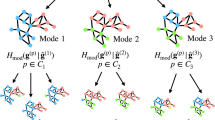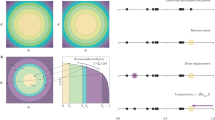Abstract
THE fickle nature of the homogeneity test as applied to partition chromatography has been well illustrated in a recent article on double zoning by Dr. Lester Smith1. The singularity of the chromatographic zone, though sound enough in theory, is no doubt taken too much for granted in applications in which conditions are not so simple as theory assumes. It seems relevant, now, to place on record conditions which I have found conducive to double zoning of a similar type on adsorption chromatograms, and which were too briefly mentioned at a symposium in 1946 2.
This is a preview of subscription content, access via your institution
Access options
Subscribe to this journal
Receive 51 print issues and online access
$199.00 per year
only $3.90 per issue
Buy this article
- Purchase on Springer Link
- Instant access to full article PDF
Prices may be subject to local taxes which are calculated during checkout
Similar content being viewed by others
References
Lester Smith, E., Nature, 169, 60 (1952).
Analyst, 71, 266 (1946).
Ovenston, T. C. J., J. Soc. Chem. Indust., 68, 54 (1949).
Schroeder, W. A., Ann. N.Y. Acad. Sci., 49, 205, 211 (1948).
Levy, W. J., and Campbell, N., J. Chem. Soc., 1445 (1939).
Parker, C. A., J. Soc. Chem. Indust., 67, 434 (1948).
Author information
Authors and Affiliations
Rights and permissions
About this article
Cite this article
OVENSTON, T. Double Zoning and the Homogeneity Test in Column Chromatography. Nature 169, 924–925 (1952). https://doi.org/10.1038/169924a0
Issue Date:
DOI: https://doi.org/10.1038/169924a0
This article is cited by
-
‘Double Fronting’ in Paper Chromatography of Proteins
Nature (1952)
Comments
By submitting a comment you agree to abide by our Terms and Community Guidelines. If you find something abusive or that does not comply with our terms or guidelines please flag it as inappropriate.



